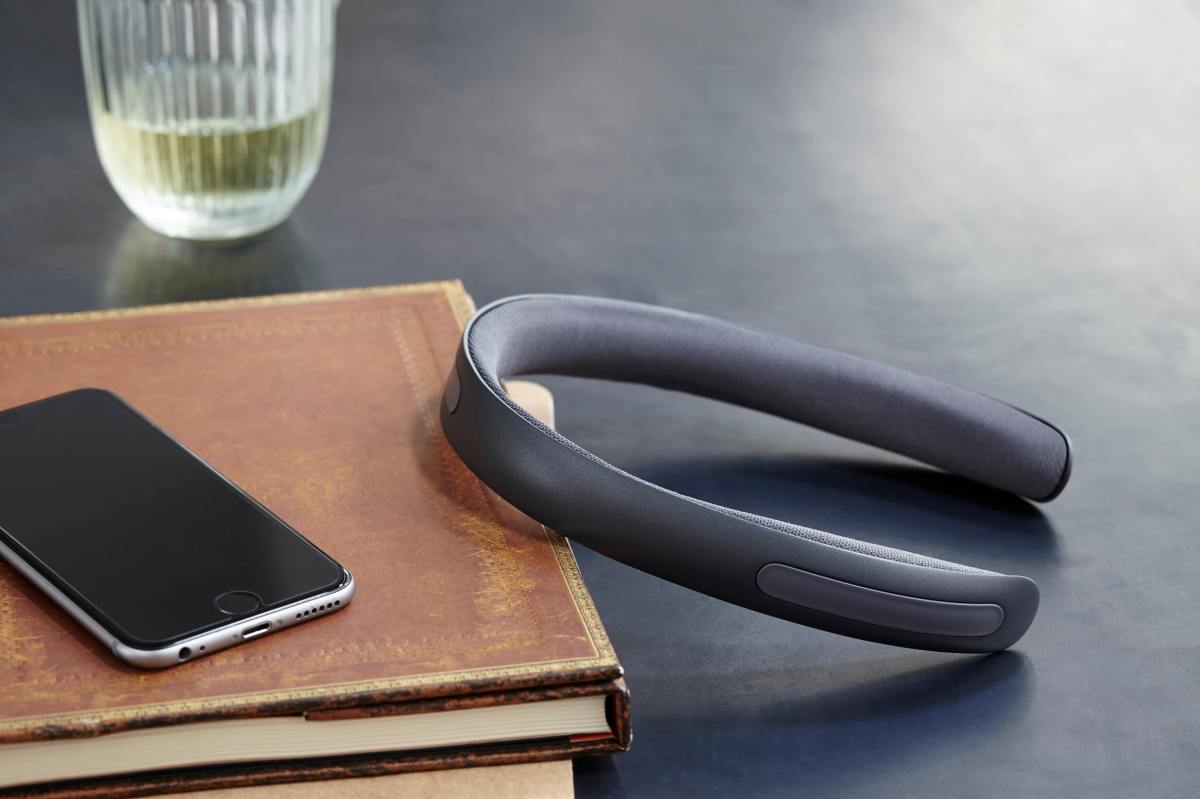Headphones are essential for listening to music while on the go, but can be a danger, blocking out the noise around you – like passing cars or trains.
Thinking about this problem and to find a new way of listening to music, Madrid-based Studio Banana Things developed the Batband, a headband that sits on the back of the head, using bone conduction technology to transfer sound waves to your inner ear via your skull. This gadget operates with a paired-up music player or smartphone via Bluetooth, so you can listen to your tunes and answer calls wirelessly. “The Batband was created to solve our hearing needs, listening on the go, taking calls on the go and most importantly staying mindful on the go,” said Key Kawamura and Ali Ganjavian, founders of Studio BananaThings. How did the Batband project idea emerge?
At Studio Banana Things we focus on day-to-day challenges faced by people on the go. The Batband was created to solve our hearing needs, listening on the go, taking calls on the go and most importantly staying mindful on the go. The Batband sounds like something fantastical. How does it work?
The Batband uses the principle of bone conduction: your skull bones transmit high frequency sound waves directly to your inner ear. This technology has existed since the 1970s, used by and large in the military and medical devices industries. The Batband brings this to the universe of sound entertainment, at an affordable price and incorporating some unique features like high fidelity thanks to its three transducers. It’s a sleek and ergonomic design making it a product that you can wear casually in multiple everyday life situations, touch sensors that enable intuitive gestural control or a microphone to take and make calls. Seems strange not to use one’s ears to listen to music…
We love innovation and creating products which truly solve a human need. Many people who have loved and tested the Batband have been blown away by the sensation of hearing through your skull. What is interesting is that it also works on people with hearing loss. This is of course dependant on the level of hearing loss. Jumping and extreme running compromise the grip on your head so we don’t recommend Usain Bolt to wear his Batband next time he tries to break the 100m world record. Is it not difficult to distinguish sounds when the user is listening via bone conduction and through the ears at the same time?
The sounds heard via the Batbands feel like they are coming from the centre of your head. We have worked hard to minimise sound leakage to the minimum. The soft inner padding of the Batband plays a crucial role in this, keeping your private soundscape truly private. Having said this, spill is a natural phenomenon and obviously if you stick your ear to someone using the Batband you can probably play the game of guessing which song he or she is listening to. What are your expectations for this device?
Our Kickstarter page was fully funded within five days, which we totally did not expect and currently we have exceeded our expectations. Our backer community have been exceptional at supporting us and giving ideas as to how to make the product even better, adding features, including apps etc. We hope to have this product in retail by June 2016 for US$ 149.00.
Ear-free headphones transmit sound via your skull


















